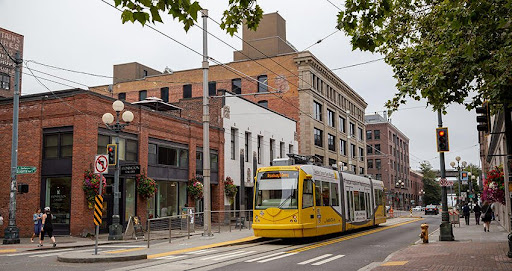
The impact of transit-oriented development on property value and transportation options
Transit-oriented development (TOD) is an urban planning strategy that focuses on creating compact, walkable, mixed-use communities around public transportation stations. It is becoming increasingly popular due to the numerous benefits it provides, including improving transportation options, reducing traffic congestion, and promoting sustainable development. In this blog, we will discuss the impact of TOD on property value and transportation options.
Property Value
Transit-oriented development has a positive impact on property value due to its proximity to public transportation. Properties located near transit stations are often in high demand, as they offer convenient access to transportation options, reducing commuting time and cost. This, in turn, increases property values, as people are willing to pay a premium to live in such areas. A study by the American Public Transportation Association found that property values near transit stations were on average 41% higher than those without. This increase in property values can also lead to increased tax revenue for local governments, which can then be reinvested in the community.
Transportation Options
Transit-oriented development encourages the use of public transportation and reduces reliance on personal vehicles, which can help reduce traffic congestion and air pollution. It provides access to a wide range of transportation options, including buses, light rail, and commuter trains, which makes it easier for people to get around without a car. This, in turn, can lead to cost savings for households, as they can reduce their transportation expenses by using public transportation.
In addition to public transportation, TOD also promotes other transportation options, such as walking and cycling. TODs are designed to be compact, walkable communities, with amenities and services located within walking distance of transit stations. This encourages people to walk or cycle, which has many benefits, including reducing traffic congestion, improving air quality, and promoting physical activity.
Community Development
Transit-oriented development also has a positive impact on community development. It promotes the development of compact, walkable communities that are designed to be livable, with amenities and services located within walking distance of transit stations. This creates a sense of community, as people are more likely to interact with one another, fostering social connections and a sense of belonging.
TODs can also help revitalize underutilized or abandoned areas, promoting economic development and job creation. By promoting development near transit stations, TODs encourage the construction of mixed-use developments, such as residential, commercial, and retail spaces, which can provide a boost to local businesses and the economy.
In conclusion, transit-oriented development has numerous benefits, including improving transportation options, reducing traffic congestion, promoting sustainable development, and increasing property values. By encouraging the development of compact, walkable communities around public transportation stations, TODs can help create livable, vibrant communities that offer a high quality of life for residents. As such, investing in properties located near transit stations can be a wise decision, as they have a high potential for appreciation in value over time.
Tags:
Comment











